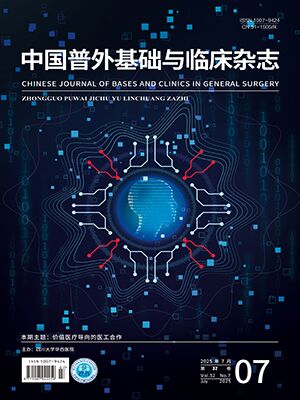| 1. |
Zen Y, Harada K, Sasaki M, et al. IgG4-related sclerosing cholangitis with and without hepatic inflammatory pseudotumor, and sclerosing pancreatitis-associated sclerosing cholangitis: do they belong to a spectrum of sclerosing pancreatitis? Am J Surg Pathol, 2004, 28(9): 1193-1203.
|
| 2. |
Ghazale A, Chari ST, Zhang L, et al. Immunoglobulin G4-associated cholangitis: clinical profile and response to therapy. Gastroenterology, 2008, 134(3): 706-715.
|
| 3. |
Kamisawa T, Zen Y, Pillai S, et al. IgG4-related disease. Lancet, 2015, 385(9976): 1460-1471.
|
| 4. |
Roos E, Hubers LM, Coelen RJS, et al. IgG4-associated cholangitis in patients resected for presumed perihilar cholangiocarcinoma: a 30-year tertiary care experience. Am J Gastroenterol, 2018, 113(5): 765-772.
|
| 5. |
Geary K, Yazici C, Seibold A, et al. IgG4-related cholangiopathy and its mimickers: a case report and review highlighting the importance of early diagnosis. Int J Surg Pathol, 2018, 26(2): 165-173.
|
| 6. |
Tanaka A, Tazuma S, Okazaki K, et al. Clinical features, response to treatment, and outcomes of IgG4-related sclerosing cholangitis. Clin Gastroenterol Hepatol, 2017, 15(6): 920-926.
|
| 7. |
Chari ST, Smyrk TC, Levy MJ, et al. Diagnosis of autoimmune pancreatitis: the Mayo Clinic experience. Clin Gastroenterol Hepatol, 2006, 4(8): 1010-1016.
|
| 8. |
Nakazawa T, Naitoh I, Hayashi K, et al. Diagnosis of IgG4-related sclerosing cholangitis. World J Gastroenterol, 2013, 19(43): 7661-7670.
|
| 9. |
Oseini AM, Chaiteerakij R, Shire AM, et al. Utility of serum immunoglobulin G4 in distinguishing immunoglobulin G4-associated cholangitis from cholangiocarcinoma. Hepatology, 2011, 54(3): 940-948.
|
| 10. |
Boonstra K, Culver EL, de Buy Wenniger LM, et al. Serum immunoglobulin G4 and immunoglobulin G1 for distinguishing immunoglobulin G4-associated cholangitis from primary sclerosing cholangitis. Hepatology, 2014, 59(5): 1954-1963.
|
| 11. |
Erdogan D, Kloek JJ, ten Kate FJ, et al. Immunoglobulin G4-related sclerosing cholangitis in patients resected for presumed malignant bile duct strictures. Br J Surg, 2008, 95(6): 727-734.
|
| 12. |
Tabata T, Kamisawa T, Hara S, et al. Differentiating immunoglobulin G4-related sclerosing cholangitis from hilar cholangiocarcinoma. Gut Liver, 2013, 7(2): 234-238.
|
| 13. |
Navaneethan U, Hasan MK, Kommaraju K, et al. Digital, single-operator cholangiopancreatoscopy in the diagnosis and management of pancreatobiliary disorders: a multicenter clinical experience (with video). Gastrointest Endosc, 2016, 84(4): 649-655.
|
| 14. |
Navaneethan U, Hasan MK, Lourdusamy V, et al. Single-operator cholangioscopy and targeted biopsies in the diagnosis of indeterminate biliary strictures: a systematic review. Gastrointest Endosc, 2015, 82(4): 608-614.
|
| 15. |
Hart PA, Kamisawa T, Brugge WR, et al. Long-term outcomes of autoimmune pancreatitis: a multicentre, international analysis. Gut, 2013, 62(12): 1771-1776.
|
| 16. |
Kamisawa T, Shimosegawa T, Okazaki K, et al. Standard steroid treatment for autoimmune pancreatitis. Gut, 2009, 58(11): 1504-1507.
|
| 17. |
Okazaki K, Chari ST, Frulloni L, et al. International consensus for the treatment of autoimmune pancreatitis. Pancreatology, 2017, 17(1): 1-6.
|
| 18. |
Kamisawa T, Okazaki K, Kawa S, et al. Amendment of the Japanese Consensus Guidelines for Autoimmune Pancreatitis, 2013 Ⅲ. Treatment and prognosis of autoimmune pancreatitis. J Gastroenterol, 2014, 49(6): 961-970.
|
| 19. |
White AF, Baum S, Buranasiri S. Aneurysms secondary to pancreatitis. AJR Am J Roentgenol, 1976, 127(3): 393-396.
|
| 20. |
Morita Y, Kawamura N, Saito H, et al. Diagnosis and embolotherapy of aneurysm of the gastroduodenal artery. Rinsho Hoshasen, 1988, 33(5): 555-561.
|
| 21. |
Kueper MA, Ludescher B, Koenigsrainer I, et al. Successful coil embolization of a ruptured gastroduodenal artery aneurysm. Vasc Endovascular Surg, 2007, 41(6): 568-571.
|
| 22. |
Habib N, Hassan S, Abdou R, et al. Gastroduodenal artery aneurysm, diagnosis, clinical presentation and management: a concise review. Ann Surg Innov Res, 2013, 7(1): 4.
|
| 23. |
Lee PC, Rhee RY, Gordon RY, et al. Management of splenic artery aneurysms: the significance of portal and essential hypertension. J Am Coll Surg, 1999, 189(5): 483-490.
|
| 24. |
Rowsell C, Moore TL, Streutker CJ. Aneurysm of the gastroduodenal artery presenting as a bleeding duodenal ulcer. Clin Gastroenterol Hepatol, 2006, 4(10): xxviii.
|
| 25. |
Harris K, Chalhoub M, Koirala A. Gastroduodenal artery aneurysm rupture in hospitalized patients: An overlooked diagnosis. World J Gastrointest Surg, 2010, 2(9): 291-294.
|
| 26. |
Pilleul F, Beuf O. Diagnosis of splanchnic artery aneurysms and pseudoaneurysms, with special reference to contrast enhanced 3D magnetic resonance angiography: a review. Acta Radiol, 2004, 45(7): 702-708.
|
| 27. |
Frauenfelder T, Wildermuth S, Marincek B, et al. Nontraumatic emergent abdominal vascular conditions: advantages of multi-detector row CT and three-dimensional imaging. Radiographics, 2004, 24(2): 481-496.
|
| 28. |
Yeh TS, Jan YY, Jeng LB, et al. Massive extra-enteric gastrointestinal hemorrhage secondary to splanchnic artery aneurysms. Hepatogastroenterology, 1997, 44(16): 1152-1156.
|




